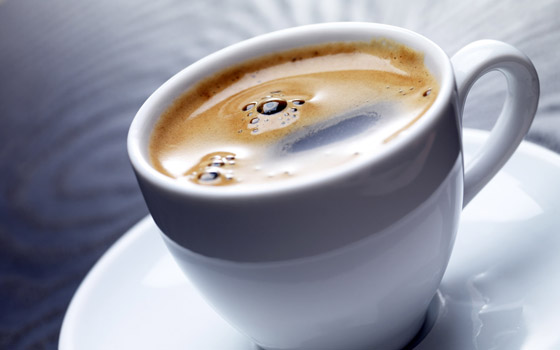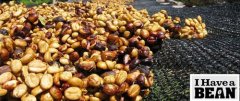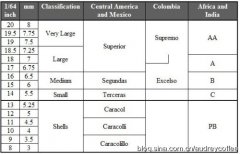Classification and Taste of Coffee beans

Ye Jia Xuefei coffee beans
Origin: Ethiopia
Although Yirgacheffe coffee is petite, it is gentle and delicate, sweet and lovely. As the hometown of coffee, thousands of years of planting history and processing tradition in Ethiopia have created high-quality washed Arabica beans. Light baking has unique sweet aromas of lemon, flowers and honey, soft acidity and citrus flavors, fresh and bright on the palate. No milk or sugar, let the rich texture and unique soft flower scent brush your taste buds, leaving an endless aftertaste.
Blue Mountain Coffee beans
Origin: blue Mountains
The blue mountain area with an altitude of more than 1000 meters, the best blue mountain (the highest grade) is named after the blue mountain with an elevation of 2256 meters. It is planted on a slope of 80 meters to 1500 meters, with a grade of NO.1,NO.2,NO.3. Characteristics: fragrance-strong, sweet-strong, acid-weak, alcohol-strong, bitter-soft.
Hawaiian Kona coffee beans
Origin: Hawaii
Perfect shape, full-bodied, full-bodied, well-balanced acidity, cinnamon. Perhaps the most beautiful coffee bean in the world.
Kona coffee beans from Hawaii have the perfect appearance, and their fruit is extremely full and shiny. The taste of coffee is rich and aromatic, with cinnamon flavor, and the acidity is well balanced.
Brazilian coffee beans
Origin: Brazil
It is of good quality and is considered to be an indispensable bean in mixing. NO.1,NO.2,Screen18~19 is the most popular and widely used type of quality. Characteristics: incense-medium, sweet-strong, acid-medium, alcohol-medium, bitter-weak.
Italian coffee beans
Origin: beans grown mainly from Arabica and coffee beans from Indonesia.
Characteristics: incense-strong, sweet-medium, acid-weak, alcohol-medium, bitter-strong.
Espresso 100%Arabica is a blend of espresso beans with charming floral and wild berry aromas, as delicious as a layer of creamy chocolate.
Mantenin coffee beans
Origin: Sumatra, Indonesia, Mantenin (unique flavor): Mantenin from Sumatra is one of the few Arakabi species with large particles, but poor production management and baking will reflect the beans. It was regarded as the best before the Blue Mountains appeared. Characteristics: fragrant-strong, sweet-medium, acid-weak, alcohol-medium, bitter-strong
Mocha coffee beans
Ethiopia-Mocha (special flavor): for the origin of coffee, small particles, dry, turquoise, with a special aroma and sour taste. Ethiopia grades NO.1~NO.8 according to the blending rate of defective beans. Characteristics: fragrance-strong, sweet-medium, acid-medium, alcohol-strong, bitter-soft
Java coffee beans
Origin: Java, Indonesia
Coffee is grown in Arabica. After baking, the bitter taste is extremely strong and the aroma is very light, without sour taste. The bitterness and mellowness of Java coffee, coupled with the sweetness of chocolate syrup, make Java coffee more mellow and palatable and very popular with women!
Colombian coffee beans
Colombia-Columbia (highest quality): the second largest producer in the world. Coffee beans are light green, large granules, with heavy flavor, whether single drink or mixed are very suitable. Characteristics: incense-strong, sweet-medium, acid-medium, alcohol-strong, bitter-weak.
Charcoal roasted coffee beans
Charcoal roasted coffee, also known as bitter coffee, means that the fire source of roasted coffee is carbon fire, and sometimes special wood is used as fuel. Coffee beans roasted with carbon fire will have wood flavor instead of carbon burning flavor. This kind of coffee comes from Japan, and the pure re-roasting creates the unique taste of Japanese charcoal roasting, which is special, sweet, mellow, full-bodied and extremely bitter.
Comprehensive hot coffee beans
Origin: imported Arabica beans, fresh baked
The taste is mellow, delicate, well balanced, low bitterness and relatively low acidity.
Rabasa coffee beans
Origin: Italy
LAVAZZA coffee after strict selection of raw beans, exclusive cooking process and baking technology, stable quality; accurate mixing ratio, rich and diverse products; unique vacuum packaging to preserve the freshness and original flavor of coffee beans.
Moak coffee beans
Origin: Italy
7 Arabica (100%) unique mix, rich and persistent aroma, rich grease, taste as mellow as syrup, with clean vanilla flavor, chic lively low acidity and sweet aftertaste, this flavor creates an incredible balance, 2 kg inert gas barrels, is the first choice for top cafes and hotels.
Important Notice :
前街咖啡 FrontStreet Coffee has moved to new addredd:
FrontStreet Coffee Address: 315,Donghua East Road,GuangZhou
Tel:020 38364473
- Prev

How to grade the coffee beans after honey treatment?
The honey treatment of raw coffee beans is to remove the peel and pulp and retain some or all of the mucous membranes (honey). Today, some Costa Rican growers grade honey-treated coffee beans according to the color of the coffee. There are three levels: yellow, red and black. The change in color results from the length of light during the drying process of coffee. Methods / steps the illumination of raw coffee beans treated with yellow honey
- Next

Sellers of raw coffee beans observe the 10 elements of raw coffee beans
Sellers of raw coffee beans are mainly responsible for grading coffee beans before selling them to coffee bean sellers. After the grading is completed, premium coffee beans and boutique coffee beans will be selected, although they will have some defects but do not affect the coffee rating. These defects are not so serious, but they can also cause potential damage to the quality of coffee. Although Cupping is undoubtedly the most clear way to check coffee beans.
Related
- Guji coffee producing area of Guji, Ethiopia: Humbela, Shakiso, Wulaga
- What is the most expensive variety of Qiloso in BOP multi-variety group?
- How to store the coffee beans bought home?
- Why are Yemeni coffee beans so rare now?
- Ethiopian Sidamo all Red Fruit Sun Sun Santa Vini Coffee beans
- SOE is mostly sour? What does it mean? Is it a single bean? what's the difference between it and Italian blending?
- Is Italian coffee beans suitable for making hand-brewed coffee?
- How to choose coffee beans when making cold coffee? What kind of coffee beans are suitable for making cold coffee?
- Just entered the pit to make coffee, what kind of coffee beans should be chosen?
- Can only Japan buy real Blue Mountain Coffee? What are authentic Jamaican Blue Mountain coffee beans?

